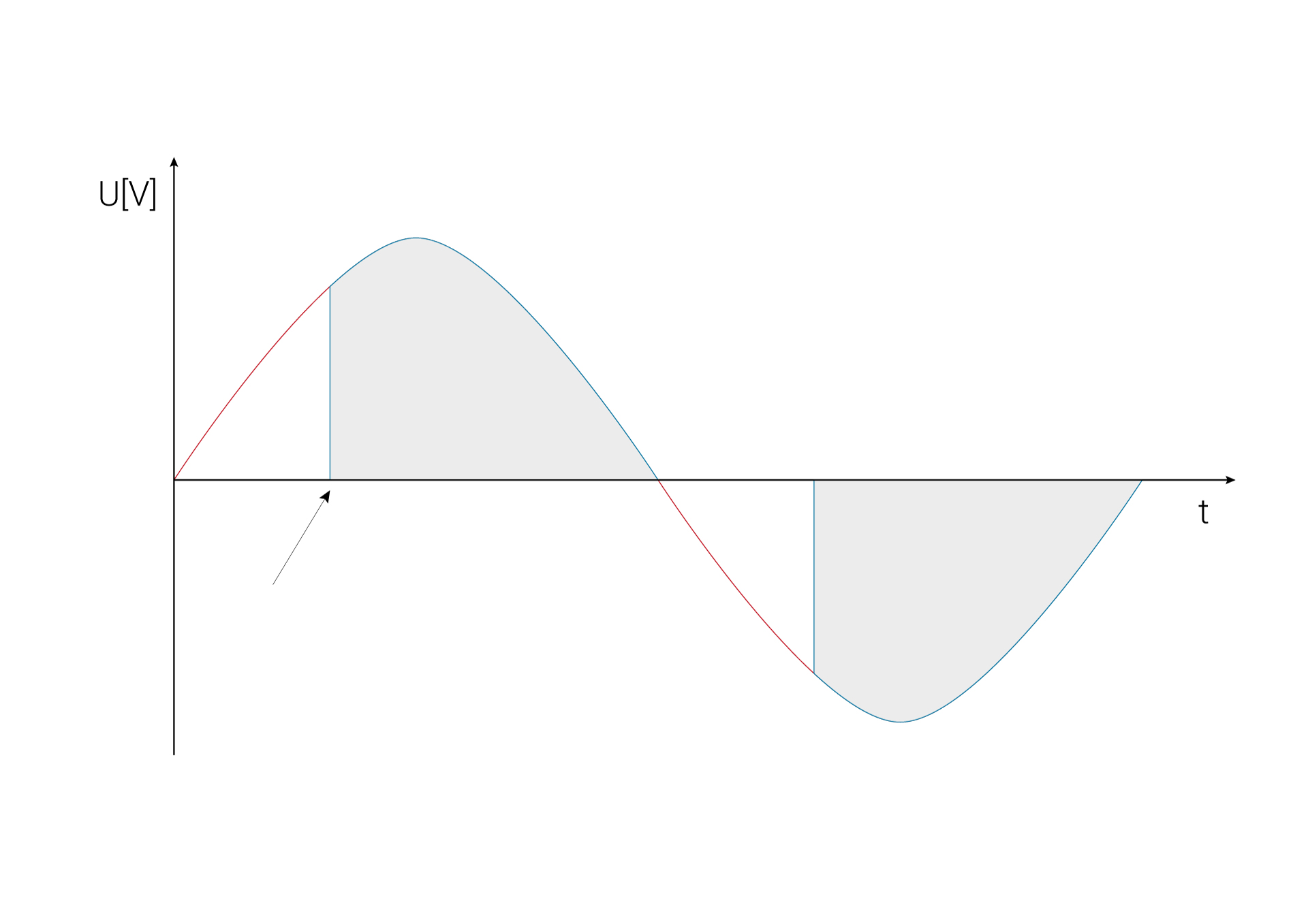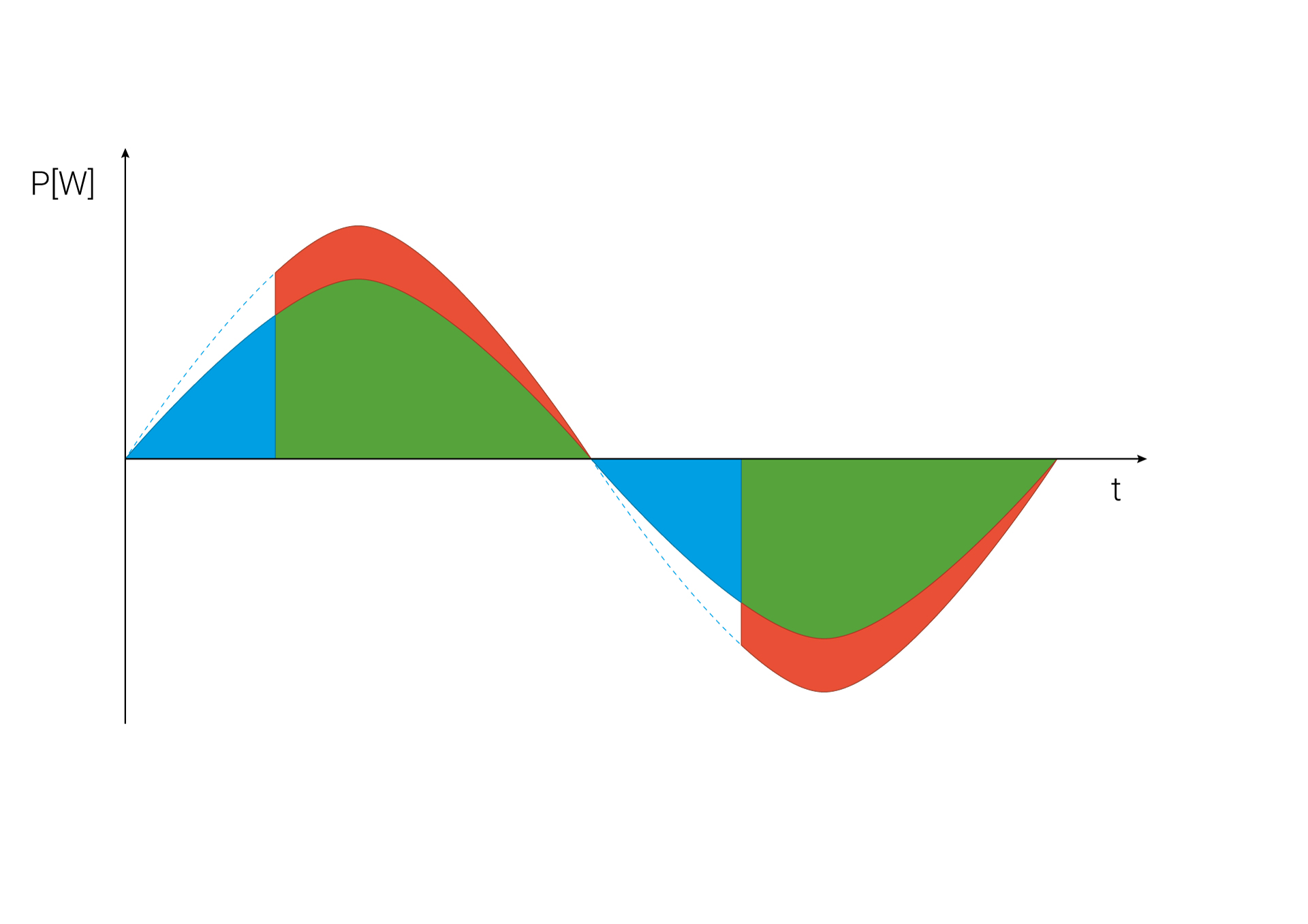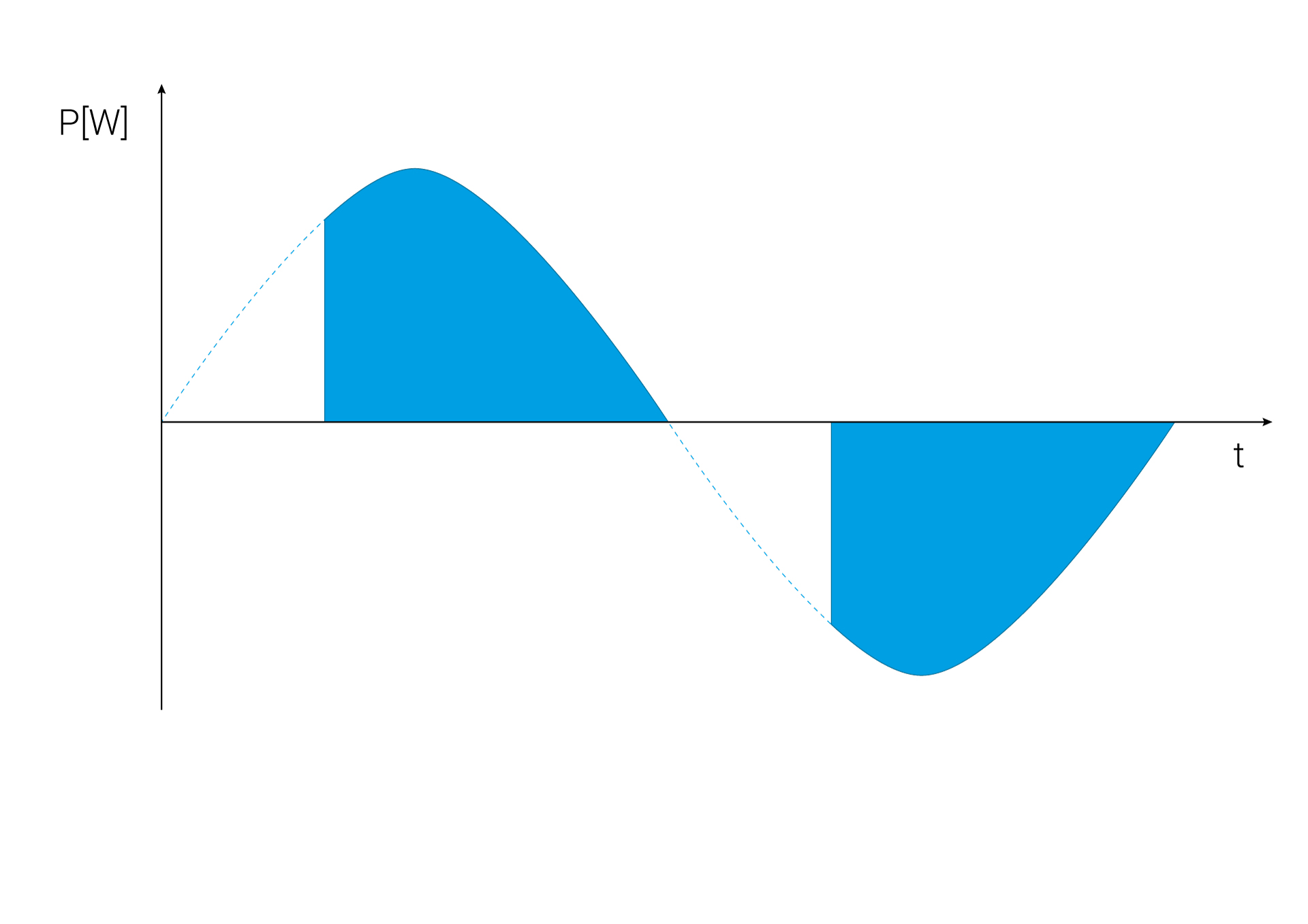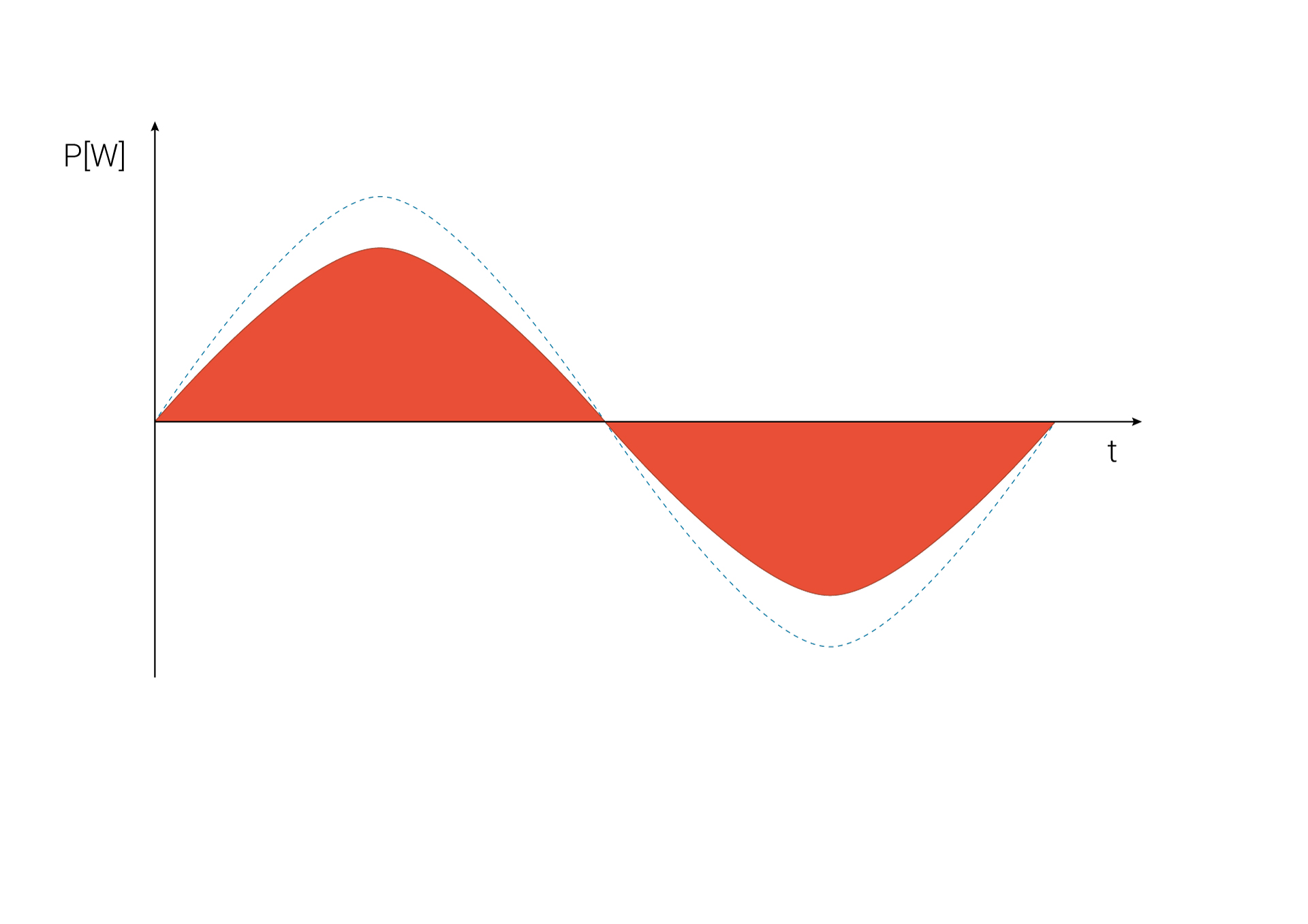Your choice of immersion heater matters


Phase angle control is a widespread kind of power control for ohmic consumers and barely presents a problem for small amounts of power. Electronic heating rods commonly consume power of 3 kW or more, and here phase angle control causes a significant phase shift. Many norms in different places only allow phase angle control to be used for upwards of 200 W.
Even the end-consumer might notice
The delayed transmission of power first causes some input of power into the grid (Fig. 4, blue area) and then demand of power from the grid (Fig. 4, red area). Therefore, the smaller the amount of excess PV energy, the bigger the input and demand of the power grid, as compared to the actual own consumption (Fig. 4, green area). Modern smart meters detect demand and input very precisely, which commonly results in more costs for the end-consumer than the input earns them.

Short communication channel without phase angle control
For this purpose, we’ve developed an interesting solution. On the one hand, the necessary hardware is boileddown to an energy meter and a stagelessly controllable 3 kW immersion heater. The energy meter detects excess power via its snap-on sensors and transmits this value wirelessly to the immersion heater. The ingenious electronics of the immersion heater switch it on and off at 20,000 pulses per second. The result is a sinusoidal, instantaneous and highly precise consumption of available excess power.
Regardless of its technical advantages, ATON further boasts with the freely programmable nature of the energy meter. This allows for adjustments to the factory settings, for example to employ additional immersion heaters. Using additional power controllers, extension modules or controllers, further consumers can be controlled – heat pumps, IR panels or electric charging stations.
Our experts in the TA support department will gladly advise you further.
“Power to heat” solutions using immersion heaters have been around for years and usually consist of a control unit and a heating rod. Information about whether and how much excess energy is currently available comes from energy meters (or “power meters”). The immersion heater, on the other hand, is switched using (often external) power controllers. If you look deeper into the market, you’ll quickly reach the conclusion that there’s two important criteria: how much power can the heater use, and how is it controlled? Some immersion heaters can be controlled stagelessly, others in stages of 200W, sometime even 1,000W, but usually somewhere in-between. Now, where’s the most relevant differences?
Our scenario
Usually, you’ll want to go easy on your heating during the sunny season, and optimally not use it at all for several months. Instead, the immersion heater should be activated, as soon as a minimum of excess energy is present. If the PV system ends up under-delivering for a while, the immersion heater should either use power from the grid, or – if it ends up being cheaper – use heating for DHW preparation after all.
How exactly is excess power used?
Depending on possible configuration of a product, the immersion heater can be turned on at a certain level of excess energy. This is where most (e.g.) 500W-stage immersion heaters encounter their first issues: you’ll either fall below a threshold and waste potential energy, or you’ll end up using energy from the power grid.
Even more difficult is the matter of timing. If information about power has to transmitted by a “power meter” to a central controller, then on to a power controller, all just to activate the immersion heater, a certain degree of inaccuracy is simply unavoidable. On a day with cloudless weather, this probably doesn’t matter too much. But especially if the weather’s a bit cloudy and PV yield fluctuates, you’ll want to use every single Watt of energy you can get to at least maintain water storage temperatures.
Fast communication between energy meter, controller, power controller and heater is crucial in this case. The immersion heater may consume power (partially or entirely) that has already been fed into the power grid and, because of the next cloud in the sky lowering PV yield again, is not even available anymore. This often results in overshooting energy conversion.
Stageless control as a (partial) solution?
Stagelessly adjustable immersion heaters offer exact (but perhaps not timely) energy consumption. Usually, phase angle control will be utilized, since it’s simple and cheap.

